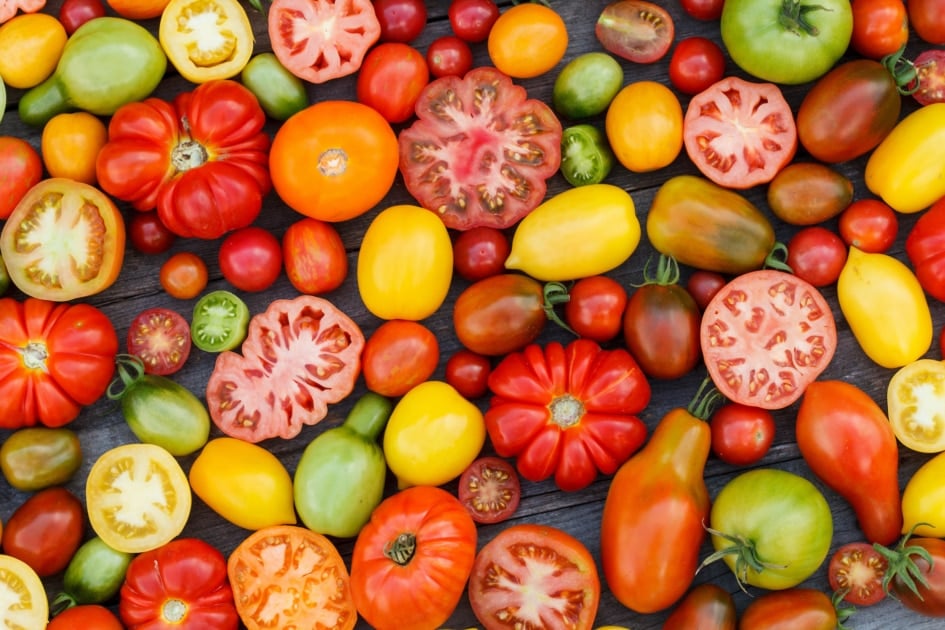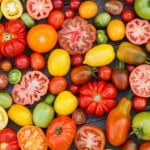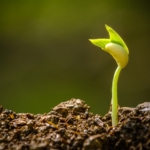Hybrid vs. Heirloom: What’s The Difference? Tomato FAQs
We explore some specifics so you can grow the fruit that's right for you!

More and more people are getting into gardening these days, especially to grow their own food. The most popular grow-your-own plants sprouting in garden beds everywhere are tomatoes, because let’s face it — nothing beats a garden tomato in your salad or on a BLT, and they’re fairly easy to grow. But with many more varieties for gardeners to choose from than there were just a decade ago, there can be some confusion, especially about varieties. So let’s explore some specifics about these summertime favorites.
Common Tomato Questions
Q: What types of tomatoes should I grow if I want a good canning season?
A: When selecting tomato varieties, there are basically two growth types: Determinate and Indeterminate. Select determinates if you’re looking for a mass one-time bloom and produce. These are great for canning, since the plant blooms almost all at once, sets fruit, and can be harvested for mass production. Succession planting these every two weeks will get you a great harvest. Indeterminate plants will constantly produce. The more you pick, the more they bloom and produce. One plant will have you picking through to the first frost.
Q: I have heard that heirlooms are the better variety. What makes a tomato an heirloom?
A: Heirloom tomatoes are open pollinated, meaning they’re pollinated by insects or wind without human intervention. Heirlooms lack the deep red color and sugar processing ability, so the ripening process is not wasting energy making that red color. They come from seed that has been handed down for generations in a particular region, hand-selected by gardeners for a special trait. Most are not as disease resistant as hybrids. Usually varieties from seed more than 40 to 50 years old, passed down through the generation of that plant, constitutes it to be an heirloom.
Q: So what is a hybrid tomato, actually?
A: Hybrids are created when plant breeders intentionally cross-pollinate at least two different varieties of a plant to produce an offspring that contains the best trait of each parent, such as bigger size or better disease resistance. Hybrid seeds will not produce the same cultivar, but will produce one of the parent plants. Most hybrid seeds are sterile, and won’t germinate. You can check to see if your hybrid tomato seeds are viable by placing them in a damp paper towel for a few days. Some will not sprout, others will, and what you get may be a pleasant surprise. In general, hybrids offer a combination of these favorable traits: dependability, easy care, early maturity, better yield, improved flavor, specific plant size, and/or disease resistance.
While hybrid plants typically yield fruit that is uniform in appearance (like what you’d see at the supermarket), heirloom vegetables produce a harvest that can be mixed, and may produce less predictably. Fruit size can vary greatly, even on the same plant.
Note: It’s important to note that hybrid and heirloom tomato varieties are not genetically modified organisms (GMO).

Kevin Cutlip
Kevin Cutlip has been a Personal Garden Coach for over 25 years. He owns KevinsGarden.com, and is known nationwide through his gardening advice in his monthly newsletter, TV appearances and speaking engagements throughout the southeast.




I do not understand how a hybrid becomes an heirloom. If you save a hybrid seeds they do not come back true but after 40-50 years it becomes an heirloom? How?
Please what is best hybrid tomatoes that can give better yield and better disease resistance?.
We always recommend checking with your local agricultural co-operative extension. They are a wealth of knowledge about what will fare best in your area. Better Boy and Early Girl are two of my favorites year after year.
Yh
Should I put the hybrid tomato seeds directly from the tomato onto the paper towel to determine if they are viable, or should I ferment them first?
Hi Anna Ruth, we found this information that you may find helpful: Reliable Seed Germination Tests
Question –
Which Type tastes better?
They’re all delicious when they’re home grown.
rmj92
LOL!! You are getting varieties in reverse, and forward as well it seems. I had a compost area about 15 years ago, that everything just was happy. I pulled all kinds of veggies out of there, and every year I had several varieties of Tomatoes, and I didn’t actually care, they were free.. One year I had Lemon Boy, and had never ever grew them, so the hybridization was breaking down. BUT, as you are refining your “evercrop” as you grow, you are in fact hybridizing in your own environment, or de-hybridizing them as I explained in the article. Tomato’s are amazing. I think it’s 428 chemical processes going on at any given time in each plant, so messing with any one of them, can change the species…
When you save your seeds, start testing viability using the damp paper towel set up, and check daily. Some will root early, some later. Separate them as they germinate, and check in separate containers… You will find your answer. Are they determinate or indeterminate? I explained each in the article as well. Gardening is cool eh?
Lisa Schaefer,
So I am wondering about this achievement you are proposing. “Pure organic, no cross pollination”. Like from bees etc? Greenhouse and 138 mghtz tuning fork is my only reply. I am perplexed about your query of cross pollinating. If it’s a plant, and it is already pure, 100% that plant, as the fruit produces, regardless of wind, bees, etc, it will be the same. It has to be 3 generations out of man made fertilizers to be certified as “organic”. You can email me if you like to get more into specifics at [email protected]
I need help on how to grow plants and collect the seeds. But the seeds from the plant have to be organic and have pure seeds. I have thought of putting plastic milk containers over the plant after I plant the seeds. Then as the plant grows putting a plastic like cover over the mature plants So there isn’t any cross pollination. This is being done for a seed lab. L.S.
10 years ago, I started a tomato garden by accident. Some store bought cherry and roma tomatoes had spoiled so I tossed them into a grass less area in my back yard for the birds to eat. Well, the birds didn’t eat them and about 3 months later I had about 40 plants coming up. I let the healthiest/strongest of the 40 get to transfer transplant size and then I put them in proper containers/soil with cages.
9 years later, I am still starting my tomatoes from that first set of seeds that came up on their own. Those tomatoes have been cross fertilized by the bees/insects and the fruit I get each year becomes less acidic,more juicy and less perfectly round. Some are still cherry size but most become slice and recipe use sized. I don’t know if these now qualify as my own ‘heirloom’ variety.
? Any comments/info for me ? Thanks.
Hey Angela ,
The first obvious way is when buying them is the packet seed or planted types, the label will tell you. As for wondering AFTER the fact, Determinate types will stop forming new shoots after blossom production has occurred. Indeterminate types will keep shooting after blossoms appear.